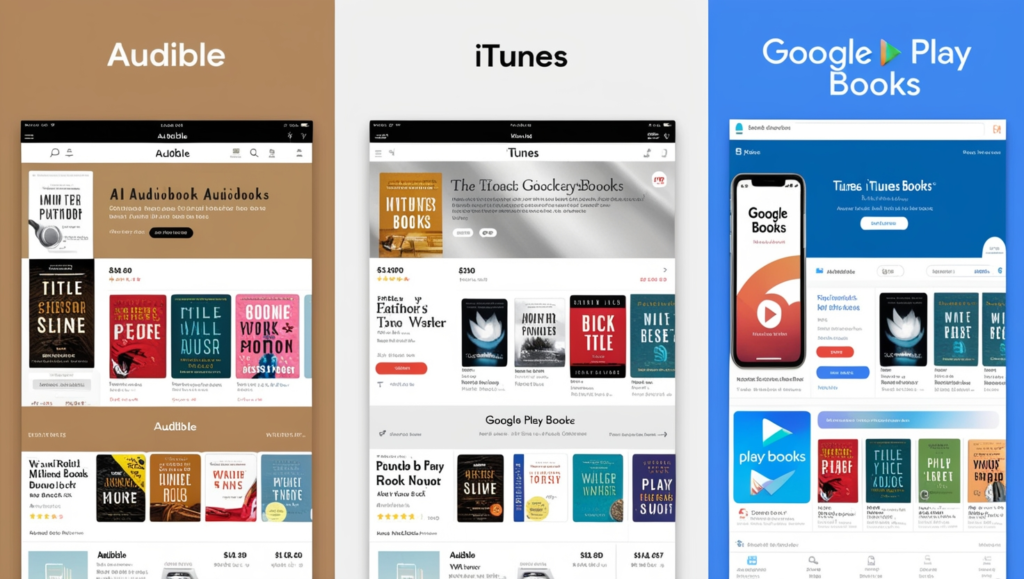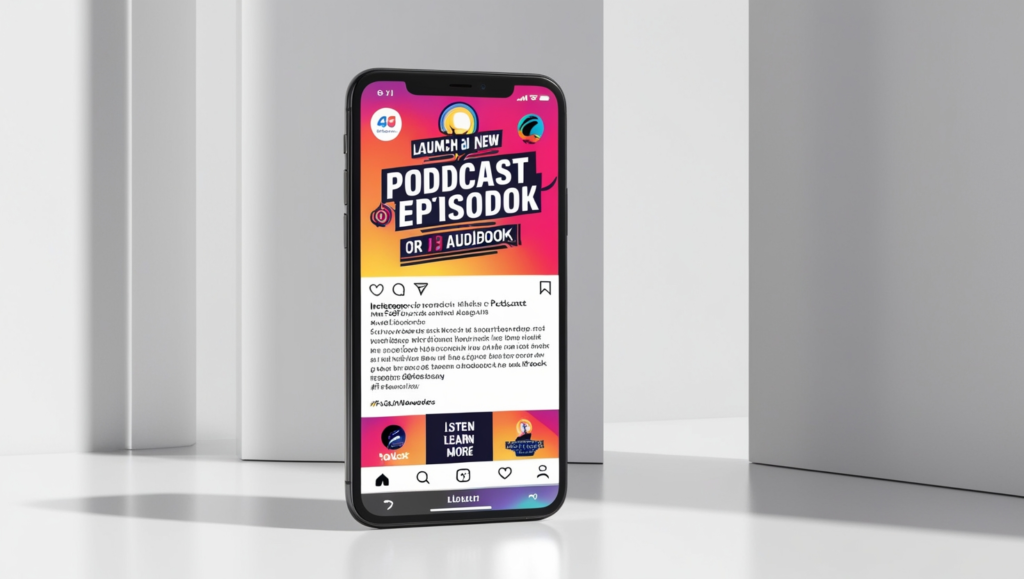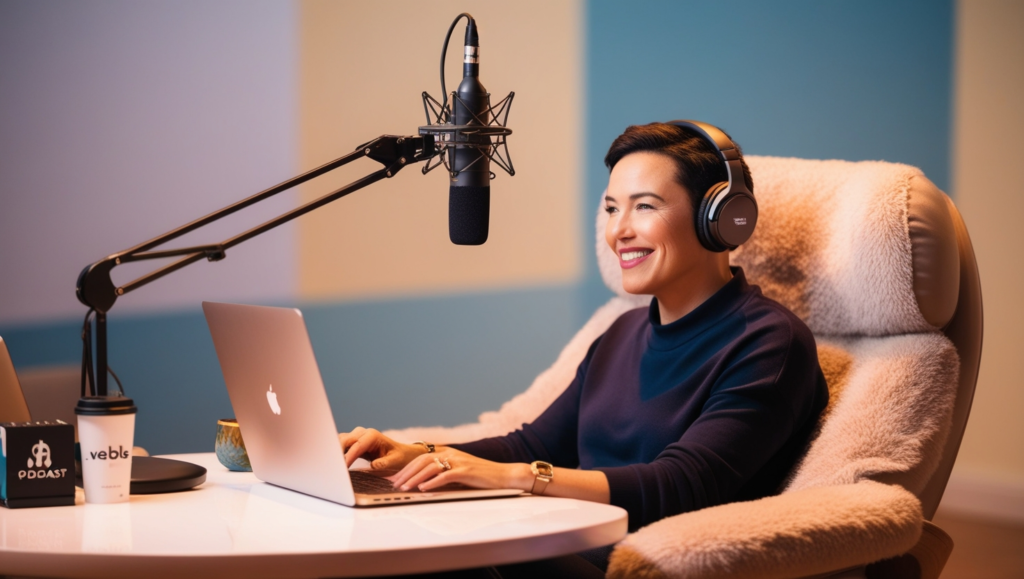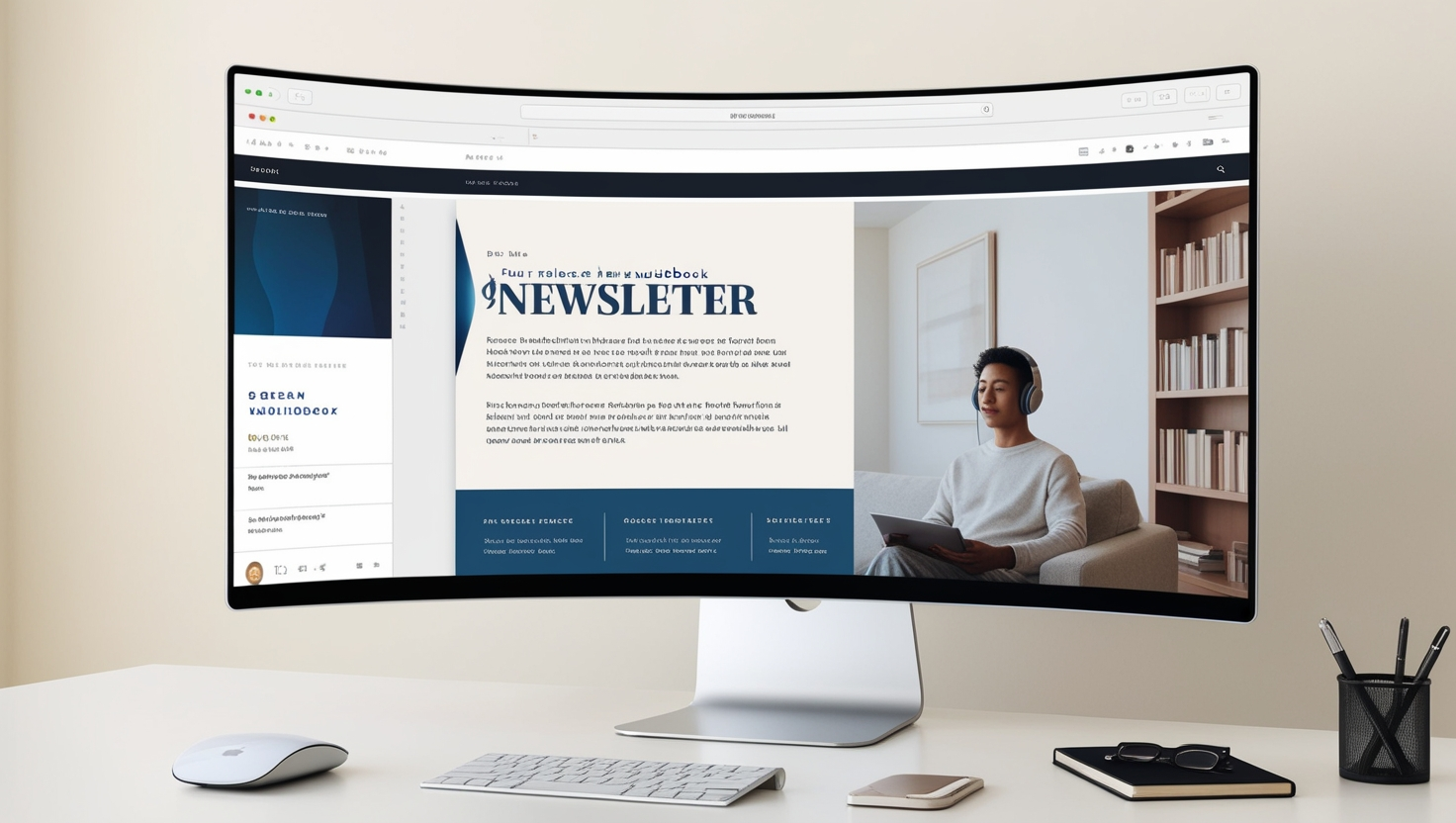Audible passive income offers a lucrative opportunity for content creators by generating revenue from audio-based content such as audiobooks and podcasts. This passive income model allows creators to earn consistently over time with minimal ongoing effort once the content is published. Key to success is understanding the mechanics of platforms like Audible and other distribution services, which provide a marketplace for audiobooks. Additionally, podcasting platforms like Spotify, Apple Podcasts, Google Podcasts, and Stitcher enable creators to monetize through sponsorships, ads, and listener donations. To build a sustainable audible income stream, content creators must develop a strategy that includes high-quality content production, effective marketing, and leveraging multiple platforms for distribution. Challenges such as initial time investment, competition, and audience engagement are important factors to address. With the right approach, creators can set up a system that generates passive income with the potential for long-term profitability, making audible passive income an appealing option for those looking to earn money from their creativity.

Introduction to Audible Passive Income
Audible passive income is an attractive option for creators looking to monetize their voice and content. By leveraging platforms like Audible, iTunes, and podcast networks, creators can generate a steady stream of income through audiobooks and podcasts. Here’s a breakdown of two popular avenues for generating audible passive income: audiobook sales and podcast advertising.
Types of Audible Passive Income
Audiobook Sales
Process:
Creating an audiobook begins with writing a script or converting an existing written work into audio format. Authors can either narrate the book themselves or hire a professional voice actor to bring the story to life. The production process involves recording the script, editing the audio to ensure clear sound quality, and mastering it for compatibility with audiobook platforms. Once the audiobook is ready, it’s distributed on major platforms like Audible, iTunes, and Google Play Books. These platforms provide access to a global audience, making it easy for authors to sell their audiobooks to listeners around the world.
Revenue:
Revenue from audiobooks primarily comes from royalties earned on each sale. The exact percentage split depends on the platform and distribution model. For example, Audible offers authors a royalty of 25% to 40% on each sale, depending on whether the book is sold via the platform’s self-publishing service, ACX (Audiobook Creation Exchange), or through other third-party distributors. Additionally, if a professional narrator is involved, the revenue is split between the author and the voice actor, which can be negotiated based on the terms of their contract. This revenue model ensures that the author and narrator are compensated for their work, with potential for long-term earnings from a single audiobook.
Authors can also explore exclusive deals with platforms, which may offer higher royalty percentages in exchange for exclusive distribution rights. This can provide additional financial incentives but may limit the reach of the audiobook across other platforms.
Podcast Advertising
Process:
Podcasters can create a passive income stream by producing regular episodes and monetizing them through various advertising methods. The first step is to build a loyal listener base by delivering engaging, consistent content. Once an audience is established, podcasters can incorporate ads into their episodes. There are several ways to monetize a podcast, including running ads directly from podcast networks, securing sponsorships, and using affiliate marketing.
Podcasts typically use pre-roll, mid-roll, and post-roll ads, which are placed at the beginning, middle, and end of episodes. In addition, sponsorships involve companies paying podcasters to feature their brand or product in an episode or series of episodes. For podcasters with a large and dedicated audience, sponsorships can be particularly lucrative.
Revenue:
Podcast advertising income is generated through various sources, such as ad revenue, sponsorship fees, and affiliate commissions. Ad revenue comes from networks like Anchor, Podbean, and other podcast hosting platforms, which facilitate the placement of ads in episodes. Podcasters typically earn based on the number of downloads per episode, with rates ranging from $10 to $25 per 1,000 downloads, depending on the podcast’s popularity and niche.
Sponsorship deals can significantly increase earnings, especially if the podcast has a niche audience that aligns with the sponsor’s target market. Sponsorship fees can vary widely, depending on the reach of the podcast and the brand’s budget, but they offer a reliable and consistent revenue stream.
Affiliate marketing allows podcasters to promote products or services in exchange for a commission on sales. This model requires little effort on the part of the podcaster once the affiliate link is embedded in the show notes or discussed in the episode.

Steps to Create Audiobooks and Podcasts
Creating audio content that generates passive income, whether through audiobooks or podcasts, requires careful planning, creative execution, and technical expertise. There are several key steps involved in producing high-quality audio that can attract listeners and keep them engaged. Below is a breakdown of the essential elements needed to create successful audible content and maximize your earning potential.
- Script Writing
Developing a Compelling Script or Outline: The first step in creating an audiobook or podcast is to craft a well-structured script or outline. Whether you’re narrating a fictional story, an informational guide, or conducting an interview, the script forms the foundation of your audio content. For an audiobook, this means adapting a written manuscript into a fluid narrative that can be easily understood when spoken. For podcasts, the script might consist of bullet points or a full outline, depending on the format of your show (e.g., solo commentary, interviews, or storytelling). The key is to make your content engaging, clear, and concise to maintain listener interest. Strong scripts ensure that you stay on topic and that your messaging is coherent throughout the episode or book, setting the stage for a professional and polished audio product.
- Voice Recording
Recording Your Voice or Hiring a Voice Actor: Once you have a script, it’s time to record the audio. This can either be done by you, the content creator, or by hiring a professional voice actor to narrate your work. The choice between narrating yourself or outsourcing this task depends on your skills, available time, and the style you want for your content. If you choose to record yourself, ensure you have a high-quality microphone and a quiet space to minimize background noise. For audiobooks, clarity and tone are critical, as the listener needs to follow the narrative smoothly. In podcasting, your voice should be engaging and resonate with the tone of your show, whether casual, formal, humorous, or informative. If you’re not confident in your narration skills or want a specific style, hiring a voice actor can bring a higher level of professionalism to your project.
- Audio Editing
Editing the Audio for Clarity and Quality: After recording, the next step is audio editing. This process involves removing mistakes, pauses, or background noise that may distract the listener. You can also add sound effects, music, or transitions to enhance the listening experience and maintain engagement. Editing is crucial for creating a polished final product, as poor audio quality can drive listeners away. For audiobooks, editing involves ensuring the pacing is consistent and the tone is appropriate. For podcasts, editing helps with flow, cutting out tangents, and ensuring the episode is as concise as needed. Various audio editing software tools like Audacity, Adobe Audition, or GarageBand can help you with this step. It’s essential to balance volume levels across your recordings so that the listening experience is smooth and comfortable, whether on headphones or speakers.
- Cover Art Design
Creating Eye-Catching Cover Art: Your cover art is the first thing potential listeners will see when they browse platforms like Audible or podcast directories, making it essential to have an attractive and professional design. The cover art should visually represent the content of your audiobook or podcast and appeal to your target audience. It needs to stand out among other listings, so consider using bold colors, clear typography, and relevant imagery that reflects your theme. If you’re not experienced with graphic design, hiring a designer can help create a more polished look. For podcasts, the cover art is often displayed in small sizes across platforms, so it’s important to ensure it remains legible and eye-catching even at reduced sizes.
- Metadata
Writing Detailed Metadata for Discoverability: Metadata includes key details such as titles, descriptions, keywords, and categories that help potential listeners discover your content. A well-written description should succinctly explain what your audiobook or podcast is about while highlighting what makes it unique or valuable to your audience. Keywords play an important role in searchability, so include relevant terms that people might use to find content like yours. For podcasts, categorizing your show properly within podcast directories will ensure it appears in the correct genre, increasing its chances of being discovered by the right audience. Similarly, for audiobooks, precise metadata helps improve visibility on platforms like Audible or iTunes, helping you reach a wider audience and boost sales.

Key Distribution Platforms
Creating audible passive income through audiobooks and podcasts requires selecting the right distribution platforms to reach your target audience. These platforms help ensure your content is accessible to listeners and generate revenue over time.
Audiobooks:
When it comes to audiobooks, popular platforms like Audible, iTunes, and Google Play Books are essential for distribution. Audible, the largest audiobook platform, offers an extensive marketplace for authors to sell their audiobooks. By using Audible’s self-publishing service, ACX (Audiobook Creation Exchange), authors can upload their works and set up distribution channels. iTunes also allows audiobook authors to distribute through Apple Books, reaching millions of users globally. Additionally, Google Play Books is another option, providing access to Android users who prefer audiobooks through the Google Play Store. These platforms offer revenue opportunities through royalties, with varying percentages based on sales and distribution rights.
Podcasts:
For podcasts, there are several key platforms that allow creators to monetize their content and reach a wide audience. Spotify, one of the largest streaming platforms, offers a massive listener base for podcasts. Similarly, Apple Podcasts is one of the most popular podcast platforms, known for its extensive catalog and user-friendly interface. Google Podcasts and Stitcher are also significant players, providing distribution and monetization opportunities. These platforms allow podcasters to generate income through ads, sponsorships, and listener support, making them key avenues for building a sustainable passive income stream.
Revenue and Return on Investment
Creating passive income through audiobooks and podcasts involves an initial investment of time, resources, and sometimes money. Understanding these costs and the time required to start earning is crucial for anyone looking to venture into this field.
Initial Investment:
The primary investment required is time. Whether you’re writing an audiobook script or planning podcast episodes, creating quality content takes effort and dedication. For audiobooks, you’ll need to invest in recording equipment, such as a high-quality microphone, soundproofing materials, and audio editing software. If you choose to hire a voice actor, that can be an additional cost, especially if you’re aiming for professional-level narration. For podcasts, the investment in equipment is similar—microphones, headphones, and editing software are essential. Depending on the level of production, you may also want to hire a designer for cover art or a professional editor to ensure the content is polished.
Time to Revenue:
The time it takes to start earning passive income from audiobooks or podcasts can vary greatly. For audiobooks, the time to revenue depends on factors like content quality, marketing efforts, and audience engagement. It typically takes several months to years to see significant earnings, especially if you’re building an audience from scratch. Podcasts can also take time, but with consistent episodes, promotion, and effective monetization strategies like sponsorships and ads, some creators start earning within the first few months. Overall, while the initial investment can be substantial, with persistence and effective promotion, the potential for passive income grows over time.

Marketing Strategies for Audible Passive Income
Promoting your audiobook or podcast is a key factor in building a successful passive income stream. Effective marketing strategies help expand your reach, attract listeners, and ultimately drive sales or ad revenue. There are several powerful methods to promote your content, including social media promotion, email marketing, collaborations, and paid advertising.
1. Social Media Promotion
Sharing Content on Platforms Like Twitter, Instagram, and TikTok: Social media is an invaluable tool for reaching a wide audience and engaging with listeners directly. Twitter, Instagram, and TikTok are excellent platforms for promoting audiobooks and podcasts due to their visual and interactive nature. On Twitter, you can join relevant conversations by using popular hashtags, participating in trending topics, and engaging with your followers. Instagram allows you to share promotional posts, behind-the-scenes content, and snippets from your audiobook or podcast to attract followers. Instagram Stories and Reels are particularly effective for creating short, engaging content that can grab attention. TikTok, with its focus on short, viral videos, is a great way to create teaser clips or creative videos related to your content. The key is to tailor your promotional efforts to each platform, ensuring you maximize engagement and visibility across different social media channels.
2. Email Marketing
Building an Email List to Directly Reach Your Audience: Email marketing remains one of the most powerful tools for building and nurturing an audience. Start by building an email list, offering something valuable like exclusive content, free chapters, or bonus episodes in exchange for subscribers’ contact information. Once you have a list, you can send regular updates, special offers, and personalized content to keep your audience engaged and informed. Email marketing allows you to create a direct line of communication with your listeners, ensuring they never miss new releases or promotions. Platforms like Mailchimp or ConvertKit offer tools to help manage your email list, design newsletters, and track engagement, making it easier to build long-term relationships with your audience.
3. Technical Issues
Partnering with Other Creators to Cross-Promote Content: Collaborating with other creators in your niche is a great way to grow your audience and increase your content’s visibility. Collaborations can take various forms, from guest appearances on each other’s podcasts to co-authoring audiobooks or sharing each other’s content across platforms. By partnering with creators who share a similar audience, you can tap into their following and gain exposure to potential listeners who might not have discovered you otherwise. In podcasting, cross-promotions are common, where creators mention each other’s shows during episodes or share promo clips. These partnerships can be mutually beneficial, expanding both creators’ audiences and increasing overall engagement.
4. Paid Advertising
Using Facebook Ads and Google Ads to Target Specific Demographics: Paid advertising is an effective way to quickly reach a targeted audience and boost visibility. Platforms like Facebook Ads and Google Ads offer powerful tools for running targeted campaigns that can help you attract listeners based on their interests, demographics, and behaviors. Facebook Ads allows you to create campaigns tailored to specific audiences, such as users who follow certain genres, influencers, or interests related to your content. Google Ads can help you drive traffic to your website, audiobook sales pages, or podcast listings by targeting relevant keywords and search queries. Both platforms provide detailed analytics, helping you optimize your ads for the best results and return on investment (ROI).
Revenue Model
Generating passive income through audiobooks and podcasts involves monetizing your content in various ways. These income streams typically rely on royalties, advertising, and listener support, allowing creators to earn revenue over time with minimal ongoing effort.
Audiobooks:
For audiobooks, the primary source of income is royalties from sales. Platforms like Audible, iTunes, and Google Play Books allow authors to distribute their audiobooks to a global audience. The royalty structure varies by platform but generally provides creators with a percentage of each sale. For instance, on Audible, authors can earn between 25% and 40% in royalties, depending on the distribution model. The income from royalties can accumulate over time, especially if the audiobook becomes popular or is part of subscription services like Audible’s Audible Plus or Audible Originals. The more books sold, the greater the ongoing revenue, making it a valuable long-term passive income option.
Podcasts:
For podcasts, monetization comes through several revenue streams. Ad revenue is one of the most common ways podcasters earn money, with advertisers paying for ad spots during episodes. Sponsorships allow podcasters to partner with brands and feature their products or services in exchange for a fixed fee. Affiliate marketing offers another opportunity, where podcasters earn a commission for promoting products or services to their listeners. Finally, listener donations through platforms like Patreon or directly on podcasting sites provide a consistent income stream by allowing loyal listeners to support their favorite shows financially. Each of these methods contributes to making podcasts a sustainable source of passive income.

Challenges and Solutions
a successful passive income stream through audiobooks and podcasts requires more than just high-quality content—it also demands consistency, effective marketing, attention to technical details, and an understanding of legal requirements. These factors help ensure that your content reaches and retains an audience while avoiding common pitfalls.
1. Consistency
One of the most crucial elements in building a loyal audience is consistency. Regularly releasing episodes or chapters helps keep your listeners engaged and fosters anticipation for future content. For podcasts, this means adhering to a consistent publishing schedule—whether weekly, bi-weekly, or monthly. Audiobook authors may opt to release sequels or multiple books in a series to maintain ongoing interest. Consistency helps establish credibility and reliability, ensuring that listeners know when to expect new content. It also signals to platforms like Apple Podcasts or Audible that you are an active creator, which can boost visibility. A content calendar is a useful tool for planning and tracking your releases, ensuring that your output remains steady and well-paced.
2. Marketing
Effective marketing is essential for expanding your reach and growing your audience. Without a solid marketing strategy, even the best content may go unnoticed. Invest time and resources into promoting your audiobooks or podcasts through various channels. Social media platforms such as Twitter, Instagram, and TikTok are valuable tools for sharing snippets, behind-the-scenes content, and engaging directly with your audience. Additionally, consider building an email list to keep your listeners informed about new releases, special promotions, or upcoming episodes. Email marketing allows you to reach your audience directly and maintain a personal connection. Collaborations with other content creators, cross-promotions, and guest appearances on podcasts can also help you tap into new audiences. Paid advertising on platforms like Facebook or Google Ads is another avenue for targeting specific demographics and boosting visibility. Without marketing, your content might remain buried beneath the noise, so it’s crucial to dedicate time to building a promotional strategy that works for your audience and goals.
3. Technical Issues
Minimizing technical issues is essential for producing professional-quality content that keeps listeners coming back. Audio quality is paramount, so invest in reliable recording equipment and editing software. Poor audio quality, such as background noise or inconsistent volume levels, can drive away potential listeners. Use high-quality microphones, soundproof your recording space, and ensure that your editing software is user-friendly and capable of handling the needs of your content. Programs like Audacity, Adobe Audition, or GarageBand offer comprehensive features for recording and editing your content. If you’re not confident in your editing skills, consider hiring a professional editor to ensure your audio is polished and free from distractions. Additionally, always test your equipment before recording to avoid last-minute issues. Technical difficulties can disrupt the flow of your creative process, but careful preparation can minimize these challenges and ensure a smooth recording session.
Legal Considerations for Audible Passive Income
When creating audiobooks or podcasts as a source of passive income, it’s important to consider various legal and financial factors. These include copyright laws, music licensing, and tax implications, which can have significant effects on your business and income. By understanding and addressing these issues, you can avoid potential legal troubles and manage your finances effectively.
1. Copyright
Copyright is a key consideration when producing audiobooks and podcasts. It protects your original work, ensuring that no one can use it without your permission. As a creator, you must ensure you own the rights to all content you produce. This includes scripts, narration, and any visual content such as cover art. If you hire a voice actor or producer, it’s crucial to establish clear contracts that outline the distribution of royalties, rights to the recording, and any other terms. If your work is based on another author’s material, you must obtain permission or the appropriate licensing to adapt their work. Additionally, if you incorporate third-party content such as quotes or clips, make sure you have the necessary rights to use them. Failing to address copyright properly can result in your content being taken down, or worse, legal action.
2. Music Licensing
If your audiobook or podcast includes music, it’s important to understand the requirements for music licensing. Many creators mistakenly use music they find online without securing the appropriate license. This can lead to legal disputes and potential revenue loss. Whether you’re using background music for your podcast or incorporating a theme song into your audiobook, you need to obtain a license that grants permission for its use. There are various types of licenses based on how you plan to use the music. For example, royalty-free music or music licensed through platforms like AudioJungle or Epidemic Sound offers affordable options for creators. If you’re working with an artist or composer, a clear agreement outlining the rights to the music, including how it can be used in your content, is essential.
3. Tax Implications
Creating audiobooks or podcasts as a business also has tax implications. Any income generated from royalties, ads, or sponsorships is taxable, and you must report it to tax authorities. Understanding how much to set aside for taxes is crucial for avoiding financial surprises. Depending on your country’s tax laws, you may need to file self-employment taxes if you operate as an independent creator. You might also be eligible for certain deductions related to business expenses, including equipment costs, software subscriptions, marketing, and more. It’s a good idea to consult with a tax professional to ensure you comply with tax regulations and understand your obligations. They can help you plan for tax payments, manage potential deductions, and avoid penalties for underreporting income.
In conclusion, building a successful passive income stream through audiobooks and podcasts requires more than just creating high-quality content. It’s essential to navigate legal and financial considerations such as copyright, music licensing, and tax implications to ensure your content remains protected and your income is managed effectively. By securing the rights to your work, obtaining appropriate licenses, and understanding the tax responsibilities associated with your earnings, you can avoid potential pitfalls and establish a solid foundation for long-term success. With careful planning and attention to detail, you can maximize the profitability of your audio content and create a sustainable income that continues to grow over time.







Leave a Reply